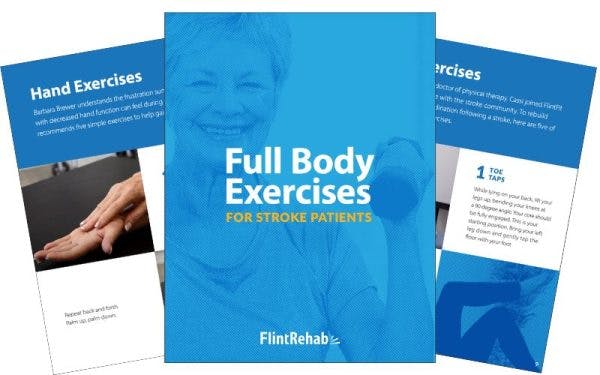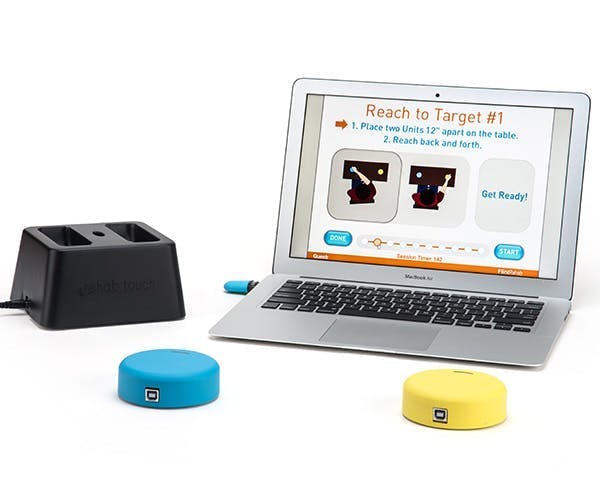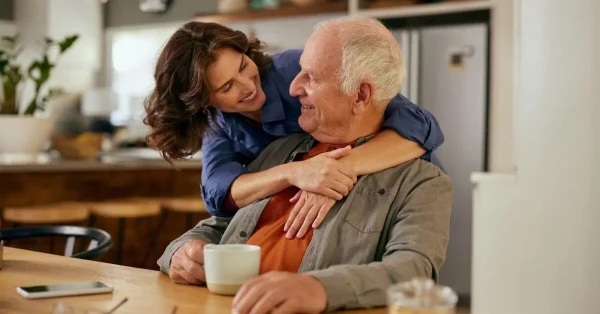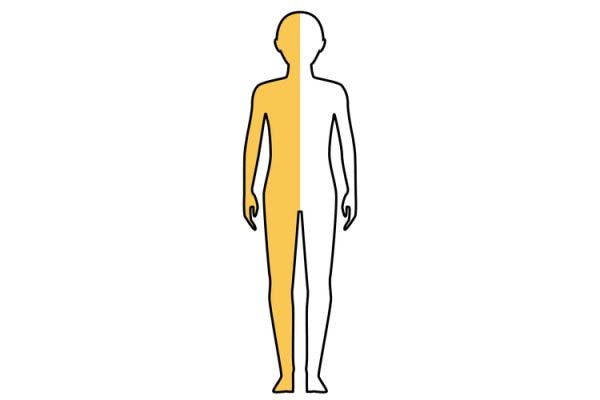Combative or aggressive behavior after stroke is a negative secondary effect frequently observed in survivors. This is especially true in the acute stage of recovery. While this can be a temporary phase, in some cases, it can be long lasting and a sign of damage to specific areas of the brain. As a result, survivors and caregivers often wonder, “How long does aggressive behavior last?” or “What treatments are available?”
In this article, we will review the acute stage of recovery and causes of combative or aggressive behavior after stroke. We will also discuss treatment methods and management techniques for survivors of stroke and their caregivers.
Early Stages of Aggressive Behavior After Stroke
Acute stroke marks the early phase during or following stroke when the brain is still swollen. The timeline after stroke of the acute phase varies, usually ranging from the first 24 hours to several weeks after the stroke. During this acute phase, the focus is minimizing damage to the brain and addressing urgent medical complications.
Aggressive behavior after stroke has been found to occur frequently in the acute stage of recovery. In a study of 202 acute stroke patients, anger was present in 35% of patients. Furthermore, 37% of angry stroke patients were severely angry. Based on these findings, aggressive behavior after stroke is likely to occur during the first few days or weeks after the onset of stroke.
This combative or aggressive behavior can include physical behaviors such as hitting, kicking, biting, and throwing objects. Additionally, aggressive behaviors after stroke can also be verbal in nature and include screaming, refusal of treatment, and muttering of unkind or hostile words.
Understandably, these behaviors can be distressing for both the survivor and their caregiver or family. But what exactly causes aggression after stroke? Research suggests this is due to a combination of factors, which we will discuss next.
The Frontal Lobe & Impulse Management
Jong S. Kim, MD, explains that aggressive behavior after stroke is more likely a symptom of brain injury rather than reactive behavior. Understanding where the stroke occurred has implications for injury-caused aggression or combative behavior after stroke.
Kim explains that when stroke affects the frontal lobe, lenticulocapsular, or pontine base areas, emotional incontinence (inability to control emotion) is more likely to be a side effect. This is because the frontal lobe in particular plays a role in reasoning, problem solving, and controlling basic impulses like anger. When the frontal lobe is damaged, it can affect emotional regulation and lead to aggressive or combative behavior after stroke.
Additionally, recent research performed by Kim suggests anger and aggressive behavior after stroke can be triggered by neurochemical dysfunction as well as unfavorable environments. For example, damage to the brain after stroke may inhibit the brain’s serotonin system, increasing the prevalence of angry or aggressive behavior. Furthermore, noxious (negative) stimulation from the environment can contribute to combative and aggressive behavior after stroke.
It is very important to ask your neurologist about the location of your stroke. The area of the brain affected by stroke has significant implications on the secondary effects you may experience, such as anger or aggressive behavior. Learning more about your specific injury can help you and your caregiver understand your unique symptoms.
Combative or aggressive behavior after stroke will often resolve as the survivor transitions out of the acute phase. Some cases do persist, however, depending on the area of the brain affected. While it’s unknown how long aggressive behavior after stroke may last, there is hope for recovery. Long-term personality changes can improve with time and appropriate treatment.
Overcoming Aggressive Behavior After Stroke
Many side effects experienced during the acute stage of stroke, like combative or aggressive behavior, go away on their own – a phenomenon called spontaneous recovery. This means that as the brain recovers and heals, negative behaviors or impairments may resolve automatically.
More studies are needed to determine the likelihood of spontaneous recovery for aggressive behavior after stroke. However, there is still hope for survivors of stroke, even if this does not occur.
During stroke recovery, the brain attempts to heal itself after the injury through the process of neuroplasticity. Through neuroplasticity, different areas of the brain can “pick up the slack” and take on lost functions. This process does not happen automatically and instead requires repetitive, dedicated effort. Just like learning a new physical skill, in order to regain the ability to control your emotions, you need to practice.
Working with a therapist or counselor can greatly help you learn to identify and manage aggressive behaviors after stroke. However, there are scenarios where a survivor has no desire for therapy or psychological care after stroke. Fortunately, there are other ways to treat aggressive behavior to improve quality of life and maximize safety for both the survivor and their caregiver.
Medication for Aggressive Behavior After Stroke
As we mentioned earlier in this article, stroke can cause a disruption of the brain’s serotonin system. Serotonin is an important neurotransmitter that carries signals between neurons (brain nerve cells). In some cases, medication like selective serotonin reuptake inhibitors (SSRIs) can help treat behavior changes after stroke such as anger, aggression, or combative behavior. SSRIs are commonly prescribed antidepressants that work by increasing levels of serotonin in the brain.
Specifically, an SSRI called fluoxetine (Prozac) has been shown to help improve “post-stroke anger proneness” – even 3 months after discontinuation of treatment. Interestingly, fluoxetine significantly improved post-stroke anger proneness and post-stroke emotional incontinence, but it did not help post-stroke depression in that study.
If aggressive behavior is the primary issue, SSRIs may be an effective treatment to reduce feelings of anger and aggression. However, if a survivor suffers from aggressive behavior after stroke as well as depression, these medications may not be appropriate.
It is important talk to your doctor about your specific symptoms to review your medication options and potential side effects.
Coping with Combative Behavior After Stroke
In addition to medication-related interventions, there are additional methods of coping with aggressive or combative behavior after stroke. To begin, understanding triggers of aggressive behavior can be a valuable first step.
Common triggers for anger and aggressive behavior after stroke can include:
- Post-stroke fatigue
- Overstimulation such as excess lights or sounds
- Confusion, especially in the acute stage of recovery
- Disruption of routine and daily structure
- Lack of control over environment or physical functions
- Increased stress
Many of these triggers are common during the stroke recovery process, especially when patients are in an inpatient medical environment such as a hospital or rehab center. By understanding the triggers of combative or aggressive behavior, you can help buffer yourself or your loved one from angry outbursts.
In addition, stroke often takes away independence and beloved hobbies or activities. This can be hard to accept, especially early on in the recovery process. Often, survivors of stroke will grieve the loss of these normal activities as well as what they thought their life would look like. If you put yourself in a survivor’s shoes, you may find empathy and understanding for their anger.
This does not mean, however, that aggressive behavior after stroke should simply be accepted or tolerated. It is important to seek help from a licensed therapist if post-stroke aggression persists beyond the acute phase. Therapy can be beneficial for both the survivor and caregiver as these trained experts can help you identify triggers of aggression and help mediate or reduce these intense feelings. Talk with your doctor about what options are available to you.
In extreme cases, when aggressive or combative behavior after stroke results in violence, talk to someone as soon as possible. You must protect yourself. Call the domestic abuse hotline relevant to you. In the United States, it’s 1-800-799-7233.
Understanding Anger After Stroke
Aggressive or combative behavior is a common secondary effect during the acute stages of stroke. This is especially true if the frontal lobe has been affected. While this type of behavior often resolves as the brain transitions out of the acute phase of recovery, it may persist depending on the severity and area of the brain involved.
Thankfully there are different treatment options available to address aggressive behavior after stroke. These include psychotherapy and medications such as the SSRI fluoxetine. It is important to talk to your doctor and rehab team about the location of the stroke as well as symptoms and behavioral changes you are experiencing, such as anger or aggression.
Stay safe, and never lose hope.










